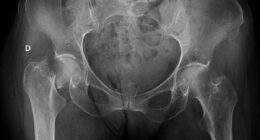Are you walking to lose weight, but happen to be baffled as to why you’re not seeing results? If so, it’s likely you’re not maintaining a calorie deficit. Simply put, you must burn more calories than you consume in order to lose weight. Sounds easy, right? Well, like anything else related to health and fitness, walking for weight loss is easier said than done.
To lose weight, the Physical Guidelines for Americans released by the U.S. Department of Health and Human Services states you should do a minimum of 150 minutes (two and a half hours) to 300 minutes (five hours) of moderately intense aerobic exercise (e.g., brisk walking) per week. Additionally, the guidelines recommend two days of strength training to support your weight loss efforts. However, the key to shedding pounds and keeping them off for the long term is to combine a nutritious, well-balanced diet with regular aerobic exercise like walking.
Walking for weight loss doesn’t have to be complicated. For example, according to the Mayo Clinic, by going on a brisk walk for just 30 minutes a day, you could torch roughly 150 extra calories each day. Plus, the faster and longer you walk, the greater number of calories you’ll burn away.
Good news: We asked Rachel MacPherson, an ACE-certified personal trainer with Garage Gym Reviews, to share her best daily walking routine to help you walk your way to a healthier weight. When combined with a healthy diet in a caloric deficit, this walking workout will equip you with the tools required to shed those unwanted pounds and keep them off for good. Read on to learn more, and next up, don’t miss This Walking Workout Is Key to Rapid Weight Loss, Expert Says.


The key to success with any routine is making it enjoyable. The more pleasurable an activity is, the more likely you’ll stick with it. “One way to encourage you to get outside and go for your daily walk is to pair your walk with another enjoyable activity that you’re only allowed to do during walks,” MacPherson tells Eat This, Not That! “For instance, choose an addicting podcast to listen to only on your walks. This strategy is called ‘temptation bundling.’ It works wonders for those who might have difficulty getting motivated.”
Science backs up MacPherson’s advice. A 2020 study published in Organizational Behavior and Human Decision Processes found that folks who engaged in temptation bundling with audiobooks were 10% to 14% more likely to exercise regularly than if no incentives were attached to their workout.


Walking the same route at the same speed day in and day out can get stale and repetitive for even the most dedicated stride enthusiast. Instead, keep your routine exciting by switching up the intensity and duration of your walks. For example, instead of going all out with a high-intensity walk every day, incorporate longer, slower walks, as well as some shorter high-intensity ones. Doing so will keep your body guessing, make your routine more mentally engaging, and help you burn more calories.
READ RELATED: 7 Ways to Prevent Tick Bites When Running or Hiking Outside, According to Experts
“Exercise can be stressful on your body, and being in a calorie deficit is also physically stressful. Longer, relaxing walks can help reduce stress and are not physically stressful,” says MacPherson. “Also, you can walk for much longer and be more consistent with slower-paced walks that allow you to take in the sights and relax. Add in higher intensity walks throughout the week to boost cardiovascular health and burn more calories.”


To keep progressing in your weight loss journey, you must increase both the volume (amount) and intensity (speed) of your walking to continue burning calories as you get more fit. This is because your metabolism adapts to your walking routine, resulting in plateaus if you don’t increase your walking amount.
“Progressing your workouts will help support weight loss as your body adapts to being in a caloric deficit needed to lose weight,” MacPherson explains. “Start your walking weight loss efforts slowly, only walking as much as you need to encourage weight loss. A gradual increase in steps will help ensure you don’t get stuck on your weight loss journey.”


“Adding hills or inclines during your walks will increase muscle activation and cardiovascular work during your walks,” MacPherson explains, adding, “Walking on an incline can boost your calorie burn and support weight loss. Make it a habit to climb a hill or incline a couple of times per week or more.”
For an average 150-pound person, every 1% increase in incline torches approximately 10 extra calories per mile than walking on a flat surface, according to the American College of Sports Medicine (ACSM).


Keeping on track with your walking routine requires you to be prepared and have a backup plan should unexpected circumstances arise that could prevent you from getting outside. “Checking the weather and planning your outfit can help you stay consistent with a walking routine. If you know you’ll have a busy day or the weather will be bad, have a backup plan for how you’ll get your walk in,” MacPherson advises. “Perhaps you’ll walk on your lunch break or walk to run errands. You may plan an indoor walk or pace your house while browsing your phone. Consistency is essential for weight loss results, so make sure nothing stands in your way.”
Source:







